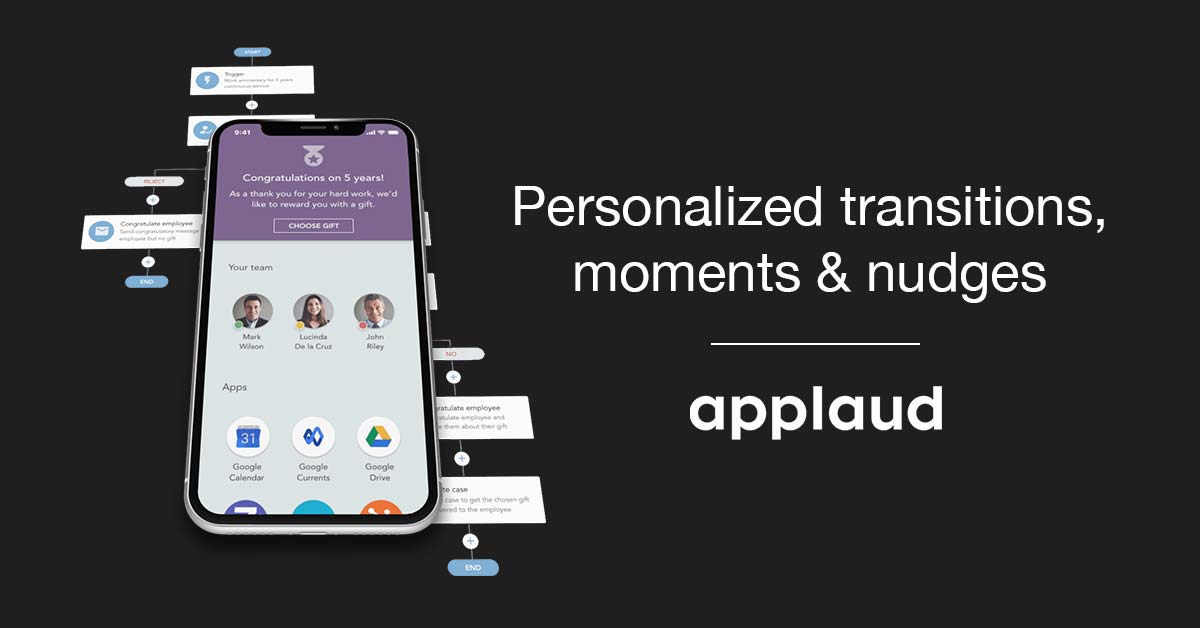Guest post: Thanks to our partnership with Mercer (formerly Leapgen), we're delighted to have contributions from their team of experts. Thank you to Lynsey Hathcock, Jim Scully, & Elizabeth Whitis for sharing their wealth of knowledge in the field of Digital Employee Experience.
With employee expectations shaped by consumer‑grade tech, a compelling digital experience is now table stakes, not a luxury. A robust digital foundation, enhanced by AI tools, is critical to engage and empower teams at scale.
However, despite the clear need, most organizations are still struggling to successfully define and implement a digital strategy.
- 3 of every 4 HR departments at large and mid-sized organizations have no unified digital strategy
- 79% HR leaders recognize the digital workforce experience is ‘Not as Good’ / ‘Very Poor’ compared to customer experience
So why is this?
Most organizations still lack the strategy and tools needed to deliver a digital employee experience that’s relevant, real-time and human-centered. Previously, we outlined how digital experience is a term that is overused but underapplied and highlighted the common misconceptions of what it means to provide a digital experience.
Now, let’s understand what is meant by digital experience?
Simply put, a modern digital HR experience is delivering a truly personalized experience, at scale, seamlessly and intuitively.
Digital = Personalized + Scalable + Seamless
It sounds fairly straightforward but when done right it is incredibly powerful. As companies are forced to look for new, innovative ways to grow and the workforce becomes more disparate than ever; companies are struggling with how to provide the personalization required to connect with their employees.
Recently, when working with an industry leading global technology firm, a senior leader made a comment that stayed with me.
“We have over 50,000 employees, we can’t possibly provide 1:1 support to everyone”.
She wasn’t wrong. When applying the concept of support in the traditional, outdated HR operating model it is likely impossible to provide a personalized experience to every employee for every HR interaction.
However, in a digital world you can absolutely provide a personalized experience at scale but only if you have the right foundations and tools set in place.
Let’s discuss what it means for something to be both personalized and scalable, through the eyes of an employee.
Meet Maria: Maria is a high performing employee who is looking to grow her career. She is invested in the culture and the values of your organization; however, she is only willing to stay long term if she can find ways to climb the ladder.
Personalized Experience
In this instance Maria is looking for very specific information personalized to her career interests and skill sets. However, she has no insight into available opportunities, or even what she might be interested in or a good match for.
In a traditional HR model:
Maria meets with her manager and has a vague conversation about her skill sets and what career paths might be available. However, like most managers, Maria’s manager has limited insight into all the various avenues that might be available for her across your large, global organization.
As a result, Maria resorts to pursuing overwhelming internal job boards to see if something stands out to her. She might also reach out to an HRBP or recruiter to try and have additional conversations. However, these take a while to schedule and require a lot of back and forth dialogue before they can truly help her identify what she might be interested in and whether there is an opportunity for her to make a transition. In reality, she will likely find the long timeline frustrating, and it becomes easier and quicker for her to grow her career externally.
Now, let’s imagine this experience from a digital perspective.
Using an AI-native HR Service Delivery suite, Maria updates her talent profile, highlighting her skills and achievements. A smart recommendation engine then surfaces similar roles where profiles like hers have thrived. If she’s short on a skill, the system suggests curated training paths, certification prep, or mentors to shadow, all delivered through one seamless interface.
Suddenly, via self-service alone, Maria is armed with a wealth of knowledge about her career and the opportunities available to her. All personalized to her. We covered the topic of personalization in HR comprehensively in a recent webinar.
Applaud specializes in creating a highly personalized digital employee experience.
Scalability
Referencing the ‘Hands, Heads, Hearts.’ model helps clients identify what type of experience they want to provide for each HR interaction.
Hands: These are the transactions that should just work. They don’t necessarily provide a compelling experience but they need to be repeatable, auditable and documentable. These are the items best suited for technology.
Heads: This is where people and machines work together. Where humans can leverage data and analytics provided by technology, to turn into meaningful stories and strategies.
Hearts: This is where you make an impact, where you can truly make a difference. These are your areas of strategic differentiation as an organization and as a result, where human interaction is imperative.
In the example of Maria, the hands interactions would be items such as populating her talent profile, reminders to update it on an ongoing basis and submitting an internal application. All tasks that should just feel easy to her.
The heads interactions would be utilizing the data provided to shape a strategy for moving forward. The technology indicated she is lacking a necessary skill set for a prospective role so she can use that information to determine how to close that gap. Training, shadow opportunities, projects- all items that could be presented to help her determine the best strategy forward for her.
The hearts interactions would be the meaningful conversations she can have with her manager, HR team and mentors as a result. This is where she can make connections that are targeted, informative and leave her feeling engaged and empowered. This results in a significant competitive advantage for you as an organization because you have created a culture where your best employees want to stay and have the ability to shape a long-term career.
By mapping your HR capabilities to the right interaction types, whether automated or human, you shape a more relevant, frictionless employee experience. The key lies in connecting these moments into one seamless, AI-supported service journey. From onboarding to offboarding and everything in between, personalized HR moments, tailored by role, region, and context, are no longer aspirational. With the right platform, they become intuitive and scalable
The result: A digital experience that allows you to leverage technology as it’s designed, so that you can provide a strategic and personalized touch at scale.
Sounds simple in theory but can feel overwhelming to many companies. In the next few blogs, we will outline specifically how you can define and execute a digital strategy unique to your organization.
About the Authors
Lynsey Hathcock is a seasoned management consultant at Leapgen with over ten years of HR strategy, design thinking and change enablement experience. Lynsey is passionate about finding innovative ways to help clients craft impactful experiences for their people to ensure intended business outcomes are realized.
Lynsey has successfully led 25+ Fortune 500 clients to solve complex organizational problems; including digital transformations, global system implementations and talent management initiatives. She brings diverse industry experience- spanning across retail, pharmaceuticals, financial services, education and non-profit.
Lynsey holds a Juris Doctor and Masters of Business Administration degree from Wake Forest University and a Bachelor’s degree in Political Science and Economics from Clemson University.
Jim Scully is a recognized industry expert in the design and optimization of HR service operations. With nearly 25 years of related professional experience, both as a consultant and practitioner, plus extensive practice research as founder of the HR Shared Services Institute, Jim has unparalleled expertise in the field of HR shared services and service operations at Leapgen. In addition, Jim brings operational excellence background, including TQM, Lean, Six Sigma and Theory of Constraints (TOC) to the realm of HR service delivery to go beyond mere consolidation to create what he calls the “Delivery Center of Excellence.” Jim holds a B.A. in Philosophy and M.S. in Management from the University of Missouri and Georgia State University, respectively.
Elizabeth Whitis is a strategy consultant at Leapgen with a passion for empowering people by helping HR work smarter and improving the employee experience. For the past six years, she has advised clients on all stages of transformation from vision to value realization. She brings a rich expertise in organizational design, process reimagination, service delivery, and change enablement.
Prior to Leapgen, Elizabeth worked in healthcare, higher education, and research industries. She has led full-suite strategy, design, and deployment initiatives on Workday, Oracle, PeopleSoft, Lawson, ServiceNow, and Salesforce projects. In her free time, Elizabeth enjoys camping and playing a good game of beach volleyball in Southern California.


